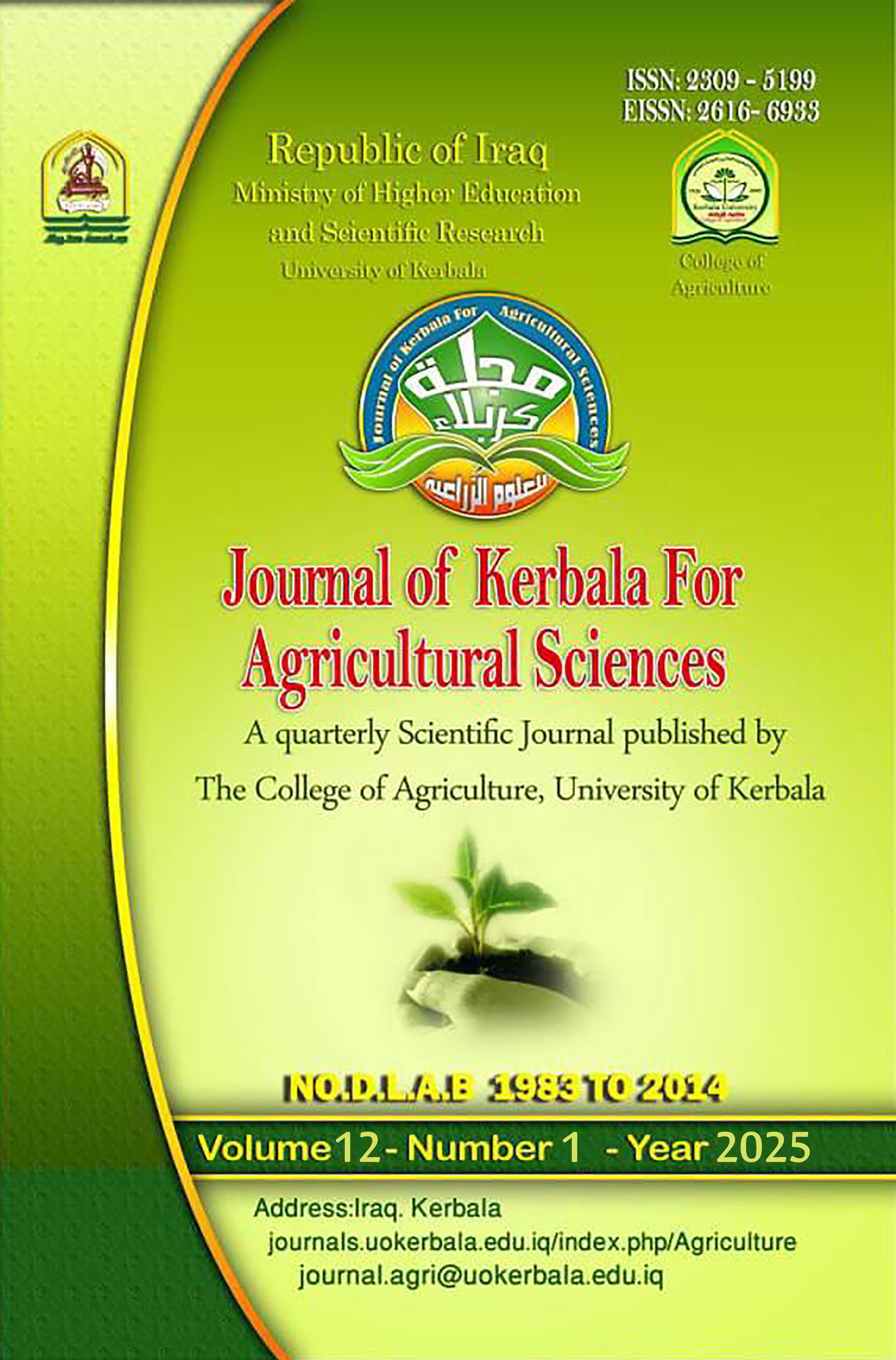Molecular identification and the effect of nanofertilization on growth traits of some maize genotypes
DOI:
https://doi.org/10.59658/jkas.v12i1.3253Keywords:
fertilization, crop productivity, genetic variations. Part of M.Sc. thesis of the first authorAbstract
Maize is an important crop. Plant fertilization plays an important role in improving and increasing crop productivity in a sustainable manner. In the fall season of 2023, a field experiment was conducted to study the effect of different combinations of chemical and nano NPK fertilizers on some growth traits of five adopted genotypes, and to study the genetic variations at the molecular level. A randomized complete block design (RCBD) was used with split-plot arrangement and three replicates. The main plots included six treatments: five fertilizer combinations plus a control treatment (no fertilization). The sub plots included genotypes (three hybrids: Reserve, Jameson and AGN720 and two synthetic cultivars: Al Maha and Al Fajr). Results showed that a significant effect on almost all of the studied traits was due to fertilization levels, genotypes, and their interaction, as the use of 50% mineral + 50% nanofertilizer led to a significant increase in plant height, stem diameter, number of active leaves, leaf area and crop growth rate, which corded 206.4 cm, 19.18 mm, 12.2 leaf plant-1, 6416 cm2, and 4.651 gm plant-1 day-1, respectively. On the other hand, the values of the control treatment gave the lowest values. The synthetic varieties outperformed in most of the studied traits. The Al-Maha synthetic variety gave the highest stem diameter and leaf area, which recorded 18.94 mm and 6419 cm2, while the Al-Fajr synthetic variety gave the highest plant height and crop growth rate, which reached 211.7 cm and 4.469 gm. plant-1 day-1. It can be concluded that mineral fertilizers can be replaced by nano-fertilizers, but can be considered as a supplement to mineral fertilizers and not a substitute for it.
Downloads
Published
How to Cite
Issue
Section
License
Copyright (c) 2025 Copyright (c) 2024 is the Author's article. Published by the Journal of Kerbala for Agricultural Sciences under a CC BY 4.0 license

This work is licensed under a Creative Commons Attribution 4.0 International License.
Licensing Terms
All articles are published under a Creative Commons License and will be directed to the Creative Commons Attribution 4.0 International License (CC BY 4.0) That permits use, distribution, and reproduction in any medium, provided the original work is properly cited. This license also allows the work to be used for commercial purposes.
Use by both non-commercial and commercial users
This content is licensed under a Creative Commons Attribution 4.0 International (CC BY 4.0) license, permitting use by both non-commercial and commercial users. Individual users may access, download, copy, display, and redistribute the articles to colleagues, as well as adapt, translate, and text- and data-mine the content, subject to the following conditions:
- The author's moral rights, including the right of attribution and the right to protect their work from derogatory treatment, are respected.
- Where content in the article is identified as belonging to a third party, users must ensure that any reuse complies with the copyright policies of the owner of that content.
- If the article content is reused for research or educational purposes, users should maintain a link to the appropriate bibliographic citation, including the DOI and a link to the published version on the journal's website.






